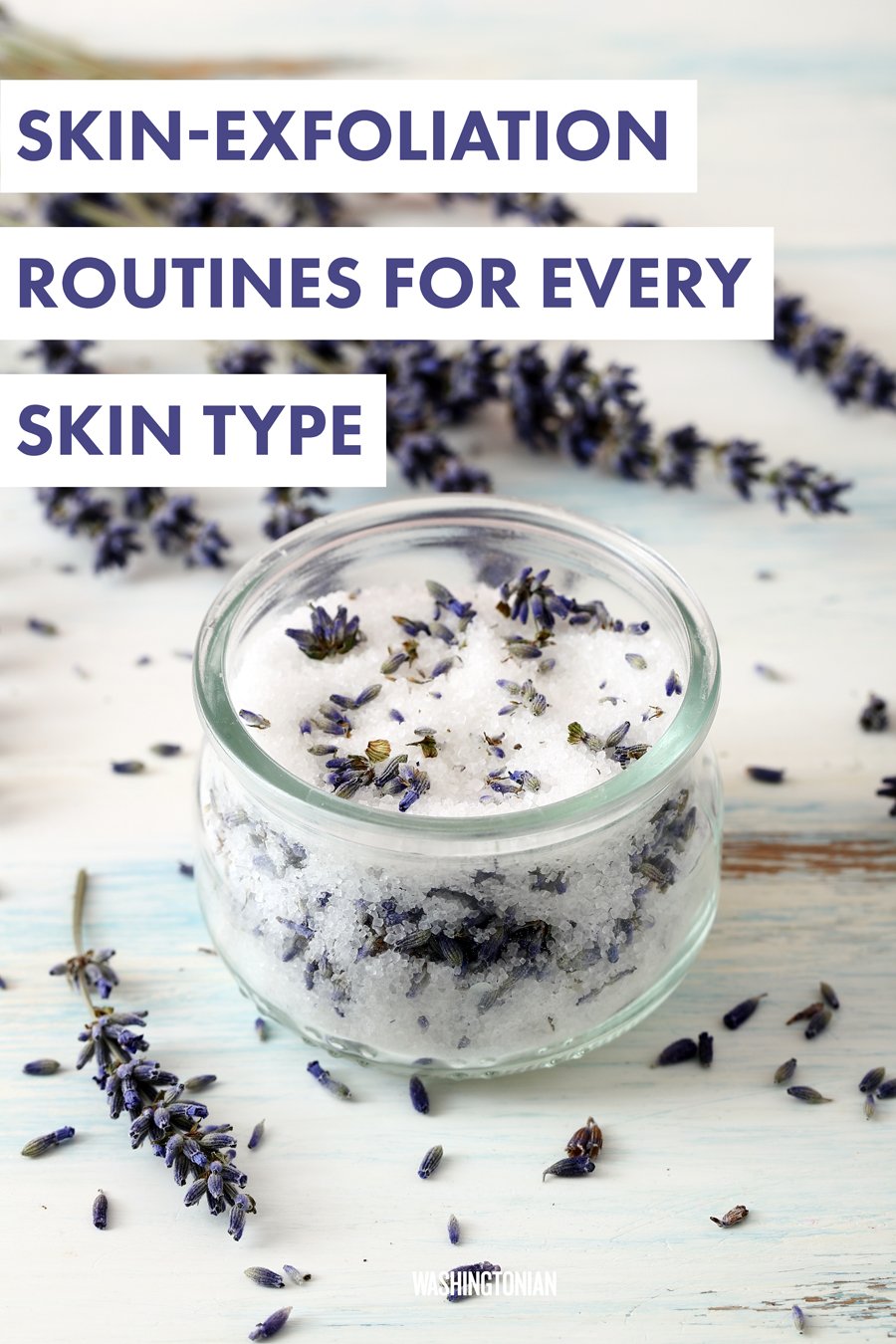As the skin ages, the rate of skin-cell turnover slows down. The result can be a dull complexion that lacks a healthy glow. Proper exfoliation is necessary to maintain that healthy glow, however, different skin types require specific approaches to exfoliation.
For sensitive skin, a washcloth and creamy cleanser two or three times a week may be all that’s needed to gently remove dead skin cells. Immediately after using a washcloth, slather on a thick moisturizer to soothe and hydrate the newly exfoliated skin. People with sensitive skin should avoid scrubs and microdermabrasion which can lead to excessive irritation. Another option is a gentle glycolic acid containing mask, but before using it on the whole face, apply to a small test area in front of the ear to determine if the skin can handle the formula. Glycolic acids can be buffered or added to hydrating ingredients to make them gentle enough for even sensitive skin, but it’s important to find a product that is specific for your skin type.
For normal skin, a variety of good exfoliating options are available. One of the best is the Clarisonic brush to gently remove dead cells, debris, and oil. It’s best used every other night with a gentle cleanser followed by a moisturizer. Once-weekly gentle facial scrubs or glycolic masks are also helpful to keep skin looking fresh. However, don’t overdo it! In my practice, I commonly see patients who are red and irritated from over-exfoliation which, over time, may actually accelerate the aging process due to chronic skin inflammation.
For oily or acne-prone skin, the Clarisonic brush can be used daily with a glycolic cleanser. Another good option is the use of daily or every-other-day glycolic pads. These are alpha- and beta-hydroxy acid soaked pads that are applied to clean skin once daily to help remove oil, debris, and dead skin cells that can clog pores. A popular beta-hydroxy acid ingredient is salicylic acid. Since daily use of glycolic acids can increase sun sensitivity, a good sunscreen is a must. To further reduce oil, a clay-based glycolic mask can do double duty: the glycolic acids help to exfoliate dead skin cells while the clay absorbs excess oil.
The big guns: microdermabrasion and chemical peels
Although regular use of at-home products and treatments can help keep skin exfoliated, in-office procedures such as microdermabrasion and light chemical peels can quickly remove large amounts of dead skin to deliver exceptionally smooth skin. In addition to leaving the skin smoother, microdermabrasion and chemical peels can address other skin issues such as discoloration and acne. It’s important to seek out an office with experience to receive the proper recommendation for your skin type. Remember, there is such a thing as “too much of a good thing” when it comes to exfoliation. Excessively red, tight, or dry skin is a sign of inflammation which is an indication that you need to decrease the frequency (or strength) of your exfoliation routine.
Dr. Elizabeth Tanzi is the co-director of the Washington Institute of Dermatologic Laser Surgery in Washington, DC.




















